Tiger Woods raised the bar when it came to how you approach the game of golf off the course.
Within 11 years of turning pro, through a combination of flexibility and weight training, which included workouts that lasted up to three hours, Tiger Woods gained 30 pounds of muscle and his waist size went from 29 to 31 inches as he dominated the world of golf.
Other golfers stood up and took notice and now it is common place to see physically strong males and females on the course, and golfer bodies like John Daly —whose body was made by a different kind of bar — are on the way out.
It doesn’t matter if you’re a pro or a weekend hacker because resistance training will help your golf game. Here are three reasons why.
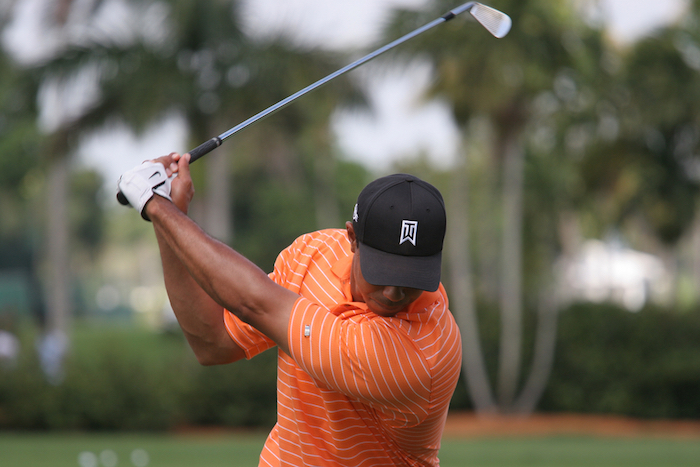
1. Improve Your Power
The gallery oohs and ahhs when a pro steps up and drives the ball over 300 yards straight down the middle. A lot golfers thought having great flexibility alone was the key for driving distance, but TPI Certified Golf Fitness Instructor Kathy Ekdahl, CSCS, says that’s a myth:
Golfers Brooks Koepka, Tiger Woods and Rory McElroy all hit the gym hard to ensure the strength needed for the powerful golf swing.
And the research backs this up. The Faculty of Sports Science at the University of Leon in Spain conducted an 18-week strength training program on low handicap golfers and most increased their explosive and maximal strength after the first 6 weeks and their golf driving performance after 12 weeks.(1)
However, flexibility is still important to the golf swing because tight muscles mean less range of motion and compensations up or down the kinetic chain. But strength training puts the gas in the golfer’s tank.
[Learn more: The Best Rotational Strength Exercises Worth Adding to Your Workout]
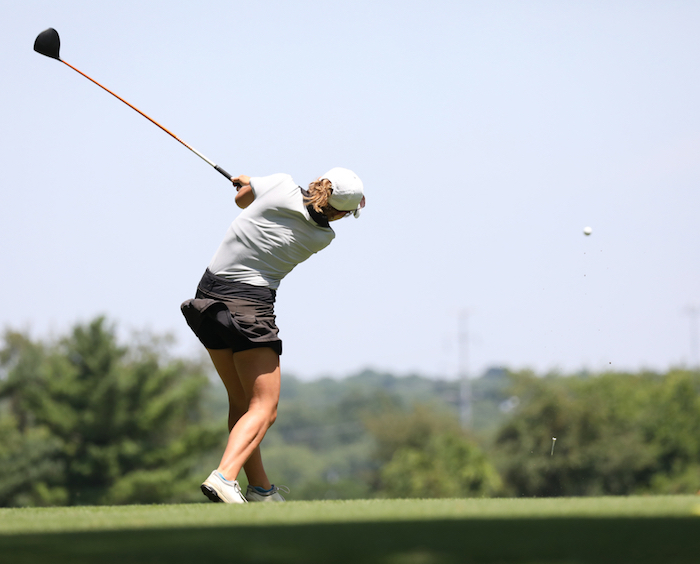
2. Reduce Asymmetries
Rotational sports like baseball, tennis and a quarterback (in football) all rotate and throw from the same side of the body. And because of this, the difference in size between the working and non-working arms is usually obvious.
The golf swing is predominately from one side of the body and if this is left unchecked, imbalances between the working and non-working side may occur, which can leave an athlete prone to injuries.
However, strength training can help reduce asymmetries, says Robbie Bagby, CSCS.
Resistance training is important to the golf swing because of its repetitive nature. The body definitely picks up some asymmetrical tendencies after spending hours on the driving range or the course.
Unilateral strength training is a golfer’s best friend, says Bagby. These will help reduce asymmetries between sides.(2)
[Check out this free training program for building unilateral strength.]
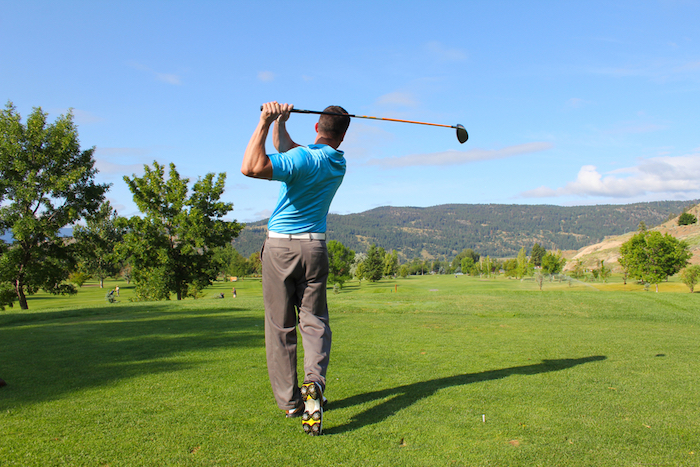
3. Attack Strength Imbalances
As explained above, muscular weakness can creep in due to training one side more than the other, but strength training can also be important for addressing imbalances, such as a lower back that’s proportionately weaker than the upper back. Again, this can be important for injury prevention.
“The body is super smart. If your lower back hurts, yet you don’t put the clubs away to recover, your body will figure out a way to work around the back pain,” says Bagby. “Maybe the back pain is a structural issue. However, could be a weakness in the core. Or the hips. Or it’s a combination of weakness in one or all of those areas.”
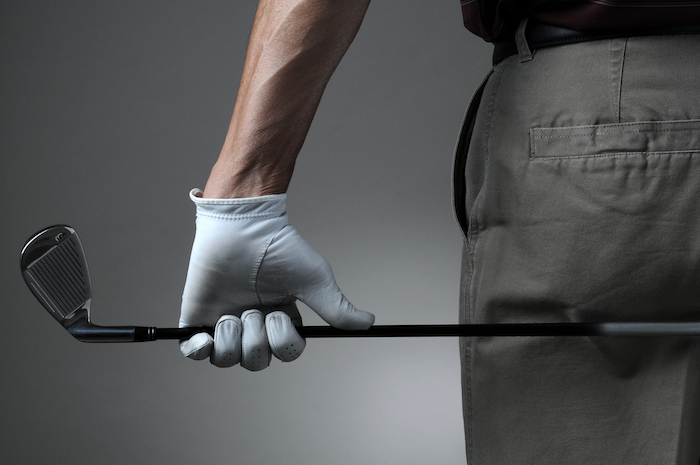
However, don’t guess, get assessed. Strength training under the watchful eye of a skilled coach is an effective treatment for treating lower back pain in golfers.(3)
If something starts to hurt, addressing your weakness and asymmetries will keep you on the course longer and stronger.
[Read More: Our Favorite Forearm Workouts, + the Best Forearm Exercises]
Muscle and Movements Golfers Must Train
Golfers are no different from other athletes in that they need to train the basic movements of push, pull, hinge, squat and carry. However, exercise variations golfers need to use revolves around the swing as Ekdahl explains.
“The golf swing is different from all other rotational sports movements in that the feet are fixed to the ground for most of the swing,” he says. “And yet club head speeds can reach eighty to one hundred and thirty miles per hour for pros, and great power needs to be created and translated through torque and coil.”
To create and translate power golfers need to train glute strength, hip stability, and anterior core strength.
Exercises like forearm rollouts, side planks, planks with arm marches, pallof presses, lateral band walking, bowler’s squats, hip thrusters, deadlifts, and Romanian deadlifts are key.
“Eventually, golfers should transition to speed and power drills through things like cable chops and med ball throws variations,” Ekdahl notes.
Furthermore, picking up something heavy and walking is an essential movement for the golf course also explains Bagby.
“Carries are important because golf bags are heavy. Plus, doing carries will increase grip strength, which is a strong predictor of club head speed — how fast the head of the club travels during the swing.”(4)
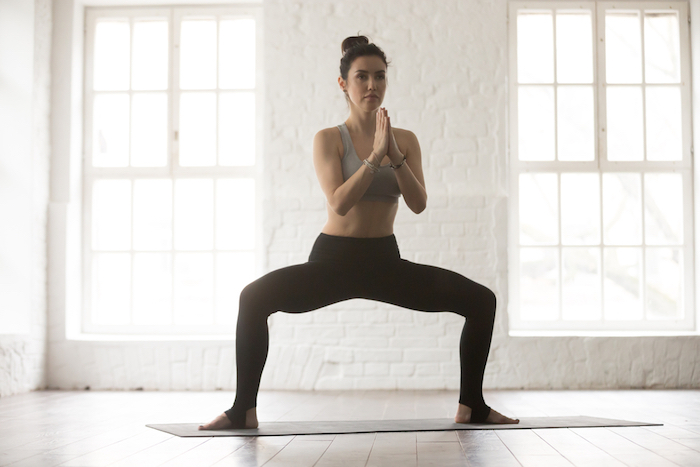
Sample 2-Day Program
This program, courtesy of Robbie Bagby, is a program that covers everything just explained. Perform the warm up first using a rep range of between 6-10 reps doing one set of each.
Do the core exercises 1 time through and for the power exercises do 2-3 sets with 60-90 seconds rest in between.
For the strength work (if not listed) do anywhere from 6-15 reps depending on your goal. Do each superset 2-3 times with a minute rest in between.
Warm up
- Quad Rocking
- T-spine rotation
- 90/90 adductor
- Internal/external hip rotation
- Sumo squat to stand
- Reverse lunge reach
- Lateral lunge
- SL DL reach
- Hand walk
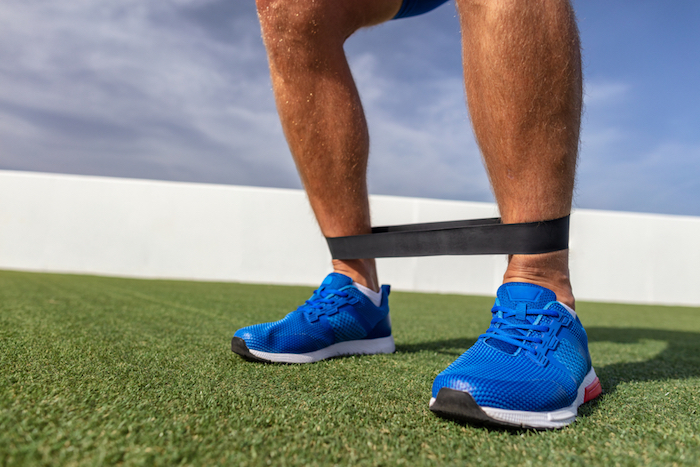
Day 1
Core
- PB rollouts: 10 reps
- Side plank breathing: 3-5 breaths on each side
- SL bridge: 5 reps each side
- Lateral band walks: 15 reps each side
Power
- MB chest pass into wall: 6-8 reps
Strength
- A1. SL squat/split squat variation
A2. Horizontal 2 arm row - B1. 1 arm overhead press
B2. 2 leg hinge - C1. Leopard crawl: 20 steps each hand
C2. Suitcase carry: 40 yards each hand
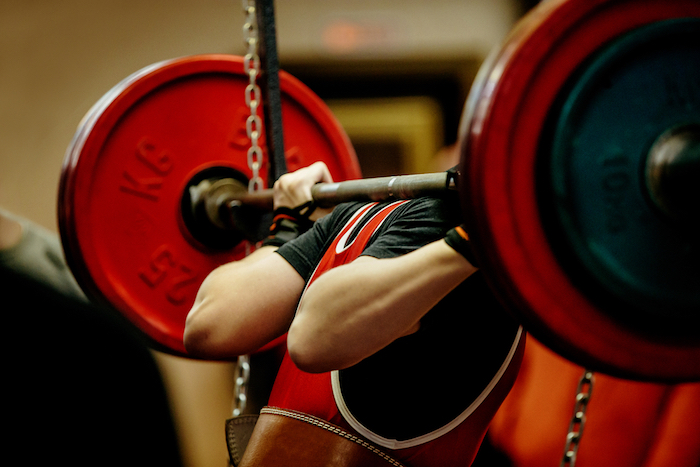
Day 2
Core
- Deadbugs: 6 reps
- Adductor side plank: 20-30 seconds on each side
- SL bridge: 5 reps
- Mini band monster walks: 15 reps
Power
- Lateral hop: 8 reps
Strength
- A1. 2 leg squat variation
A2. 1 arm vertical pull - B1. Push-up
B2. SL hinge variation - C1. Farmers carry: 40 yards
C2. Cable pallof press
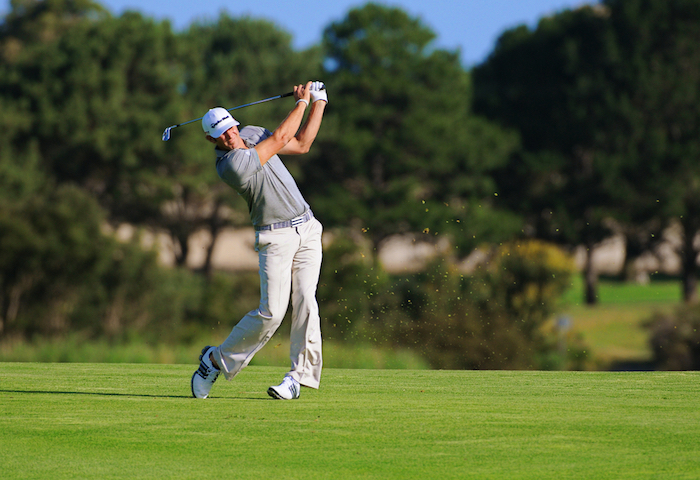
[Read More: The Best Shoulder Exercises and Workouts for Bigger, Stronger Shoulders]
Finishing up
The message is clear. If golfers want to hit the ball further and avoid injuries, stepping inside a gym is essential. Flexing the biceps after a great shot is optional though.
Editor’s note: The content on BarBend is meant to be informative in nature, but it shouldn’t take the place of advice and/or supervision from a medical professional. The opinions and articles on this site are not intended for use as diagnosis, prevention, and/or treatment of health problems. Speak with your physician if you have any concerns or before beginning any new dietary regimen.
Featured image via Steve Cukrov/Shutterstock
References
1. Alvarez M1, Sedano S, Cuadrado G, Redondo JC. Effects of an 18-week strength training program on low-handicap golfers’ performance. J Strength Cond Res. 2012 Apr;26(4)1110-21.
2. Lehman GJ.Resistance training for performance and injury prevention in golf. J Can Chiropr Assoc. 2006 Mar;50(1):27-42.
3. Grimshaw P1, Giles A, Tong R, Grimmer K. Lower back and elbow injuries in golf. Sports Med. 2002;32(10):655-66.
4. Cummings PM1, Waldman HS2, Krings BM2, Smith JW2, McAllister MJ2.Effects of Fat Grip Training on Muscular Strength and Driving Performance in Division I Male Golfers. J Strength Cond Res. 2018 Jan;32(1):205-210.